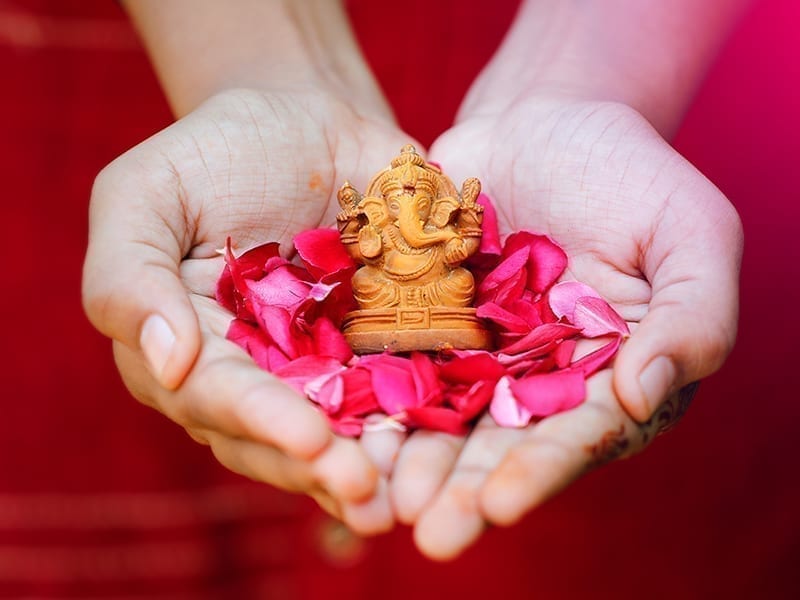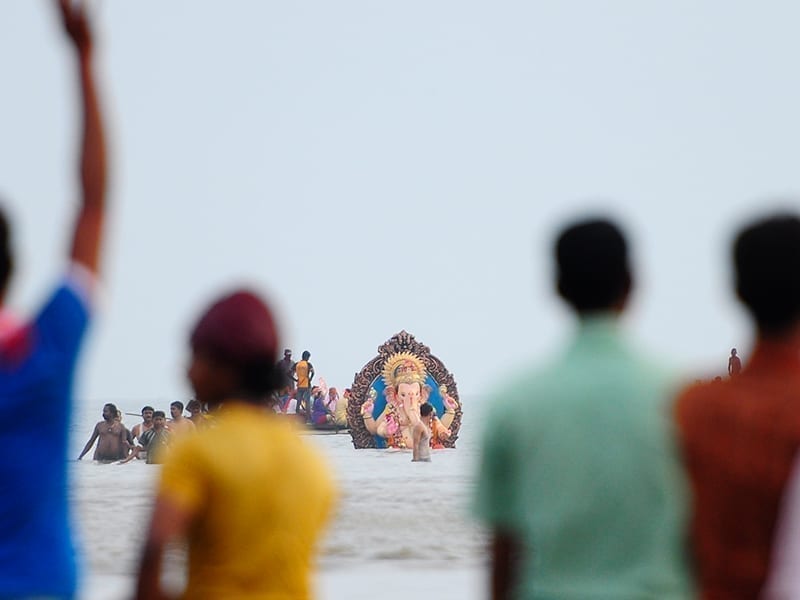Devotees across the globe have been celebrating Ganesh Chaturthi to commemorate the birth anniversary of Lord Shiva and Mata Parvati’s son, Ganesha. In spite of the restrictions this year due to Covid-19, pujas have been conducted at homes among close friends and family members, commercial establishments and small pandals. Few have been worshipping Bappa for one and a half days, three days, five, seven or sometimes even eleven days straight If you are looking to glam up your home to welcome Bappa, check out these 10 ganpati decoration ideas with flowers here.. Though the method of the puja depends upon the tradition of each family, people bid him farewell in the same manner—by immersing him in water. This ritual is called Ganesh visarjan.
As per Drikpanchang, the Ganesh visarjan usually takes place after Madhyana or the second half of the day. However, some people do it on the same day as well. Below is the complete timetable for the visarjan in 2020, and also the history and significance behind Bappa’s farewell.

Why Is Ganesh Visarjan Done?
Bappa’s visarjan is done to signify the birth cycle of Lord Ganesha; just as he was created from Earth. This is exactly why you’ll find Ganesha idols are generally made of clay. The idol is immersed in water so that Ganesha may return to his home after his stay at the devotees’ home or temple where the Chaturthi rituals are held. It might seem like a good idea to skip the visarjan and keep hosting Ganesha for fortune and prosperity all life long, but it is said that the power that permeates the statue after 10 days of worship is all that a human being can bear. So it is not to be kept any longer. Here are some beautiful aarti plate decoration ideas you can ideate this Ganpati Pujan.

Since discarding or breaking the idol would be disrespectful, the statue is ritualistically immersed in water so it may break down to the clay from where it came (the Earth). Some statues are prepared such that their constituent materials actually benefit the ecosystem they enter.
Nevertheless, in recent years the immersion of idols made of non-biodegradable materials and the use of poisonous substances in the paints has led to pollution of water bodies which takes away the positive symbolism and impact of the ritual. As we pray to Bappa, we must remember to do so responsibly. Hence, nowadays a lot of visarjans are done at home.
Ganesh Visarjan Timings For 2020
Visarjan timings are rather different for families depending on how many days they’re worshipping Bappa.
Those who are doing the puja for eleven days (1st September) can do the visarjan on Ananta Chaturdashi between:
| Muhurat | Time | Date |
| Prataha Muhurat | 9:10 AM to 1:56 PM | 1st September |
| Madhyana Muhurat | 3:32 PM to 5:07 PM | 1st September |
| Sandhya Muhurat | 8:07 PM to 9:32 PM | 1st September |
| Ratri Muhurat | 10:56 PM to 3:10 AM | 2nd September |
Why Opt For A Home Visarjan?
There are a number of reasons why one can look forward to a home visarjan. Not only is it really fun with just your closest family and friends, but also extremely eco-friendly.
- A lot of people are unaware of the harmful effects of the Plaster Of Paris in the seas and water bodies. The POP (Plaster Of Paris) present in the idols have elements like sulphur, gypsum, phosphorus, magnesium and so on, which take months to dissolve in the water, often poisoning the water bodies in the process.
- The chemical paints which are used to paint the clay idols contain mercury, lead, and cadmium, which increases the acidity and heavy metal content of the water.
- Several of Ganesha’s accessories like plastic flowers, thermocol, camphor and so many other non-biodegradable items are dumped into these water bodies increasing pollution.
- Sometimes casual dumping of the idols blocks the passage of the water creating breeding grounds for mosquitoes and other pests.
- The polluted water will further cause several diseases in humans and impact marine life, flora and fauna.
How To Do A Home Visarjan?
Ganesha Visarjan varies from one family to another depending on their traditions. For all of you who’ll do it during Ananta Chaturdashi, here are the following steps usually followed.
- On the day of Ganesh visarjan, the entire family gathers around in front of the idol and offers their final prayers.
- This is usually done by offering flowers, lighting diyas, incense sticks, modaks, ladoos and other eatables which were prepared earlier for the day. You can check our special Ganesha Chaturthi recipes too.
- The aarti is done with the ritualistic camphor flame in the puja thali.
- The whole family chants prayers and the head of the family sprinkles vermillion-laced rice called Akshad on the idol. Everyone does a final namaskar.
- Finally, the eldest member of the family touches the idol and gently moves it as a mark of starting the farewell journey.
- You must offer him curd and sweets as you bid him farewell. Also, your family must bundle some rice and cereals in a red cloth to accompany him during his voyage back home.
- The various shlokas of Ganesha are chanted. Then, the designated eldest member takes the idol for a final round around the house.
- Usually, a bucket is used where the eco-friendly idol gets immersed and this is how Ganesha Chaturthi celebrations come to an end.
- The water should then be properly disposed of. Since nowadays most of the murtis used are made of clay, once the idol gets properly immersed and breaks down, remove any form of plastic jewellery or thermocol that may have been used as adornments on the idol. All that the bucket must contain are water and clay. This can be used to water outdoor plants in your garden or even your terrace. If your space is limited and you don’t have plants around you, make sure to water any roadside tree with the water. Don’t let the water flow across drains when good use can be made out of it.
- Any form of plastic jewellery can be reused for the next year. You can even DIY jewellery pieces for Bappa using bits and pieces from last year.
- If your Ganpati murti is made out of Plaster Of Paris and chemical paints are used, make sure you dispose of the water in the municipal/local authority waste bins so that they can be taken care of and filtered accordingly. Remember to let them know that the water is unfit to be discharged into any nearby water bodies.
Now that 1st September is already knocking on your doors, it’s time to bid adieu to Bappa for his final voyage home. Tell us how did you celebrate this Ganesha Chaturthi with your friends and family in the comments below!

